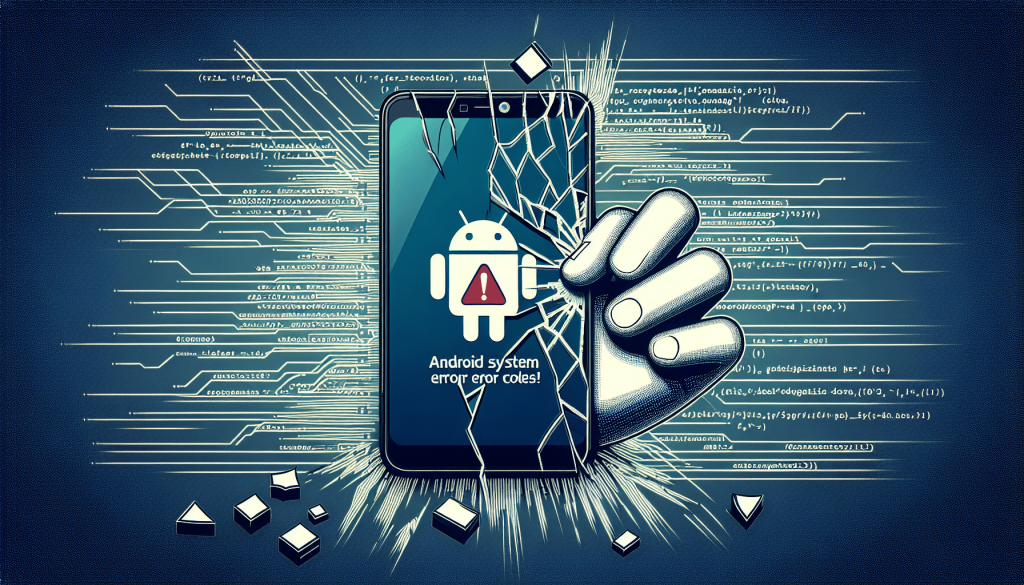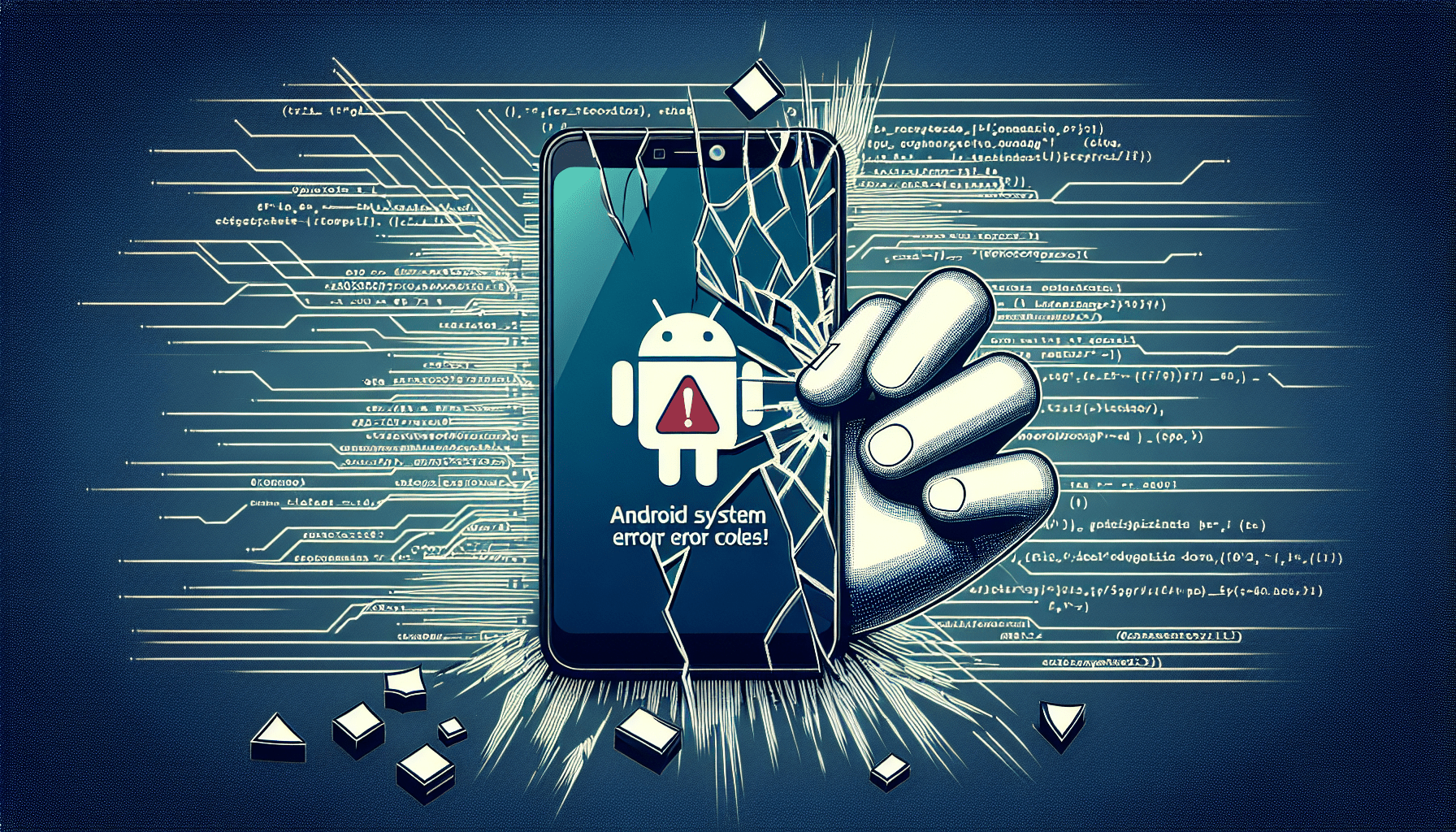In today’s digital age, where smartphones have become an integral part of our lives, encountering system errors can be frustrating and perplexing. To navigate these challenges effectively, it is essential to have a deep understanding of Android system error codes. In this article, you will gain valuable insights into the various error codes that can occur on Android devices, enabling you to troubleshoot and resolve issues efficiently. By delving into the intricacies of these error codes, you will be equipped with the knowledge necessary to overcome obstacles and optimize your Android experience.
Understanding Android System Error Codes

What are Android System Error Codes?
Android System Error Codes are numeric codes that are used to identify and communicate specific issues or errors within the Android operating system. These error codes provide information about what went wrong during the execution of a process or task on an Android device. They serve as a way of troubleshooting and diagnosing problems, enabling developers and users to understand the cause of the error and find appropriate solutions.
Why are Error Codes Important?
Error codes play a crucial role in the Android operating system because they provide valuable insights into the nature and cause of a problem. When an error occurs, it can be challenging to determine the exact issue without error codes. By providing a specific error code, Android simplifies the troubleshooting process by directing developers and users to the root cause of the problem. With this information, they can take effective steps to resolve the issue, saving time and effort.
Common Error Codes in Android
There are numerous error codes in the Android system, each indicating a different type of issue. Some of the most common error codes include 401 Unauthorized, 404 Not Found, 500 Internal Server Error, 503 Service Unavailable, 1001 Network Error, 2001 Database Error, and 3001 File System Error. In the following sections, we will delve into each of these error codes, explaining their meanings and potential solutions.

Error Code: 401 Unauthorized
The 401 Unauthorized error code occurs when an Android user attempts to access a resource or perform an action without proper authentication or permission. It signifies that the user’s credentials are invalid, expired, or missing. To resolve this error, users should check their login credentials and ensure they have the necessary authorization to access the resource. If the problem persists, contacting the system administrator or service provider for assistance is recommended.
Error Code: 404 Not Found
The 404 Not Found error code is one of the most familiar error codes encountered while browsing the internet on an Android device. It occurs when the requested resource, such as a webpage or file, cannot be found or does not exist on the server. This error could arise due to various reasons, such as mistyped URLs, broken links, or deleted content. To resolve this issue, users can double-check the URL they entered, refresh the page, or contact the website administrator for further assistance.
Error Code: 500 Internal Server Error
The 500 Internal Server Error is a generic error code that indicates an issue with the server hosting the website or application being accessed by the Android device. This error could occur due to server misconfiguration, programming errors, or overloaded server resources. When encountering this error, it is recommended to refresh the page or try accessing the resource at a later time. If the problem persists, contacting the website administrator or application developer is advisable.
Error Code: 503 Service Unavailable
The 503 Service Unavailable error code occurs when a server temporarily cannot handle the request from an Android device. This could happen due to server maintenance, high traffic, or other temporary issues. When encountering this error, users can try refreshing the page or accessing the resource after some time. If the problem persists, contacting the website administrator or service provider for assistance is recommended.
Error Code: 1001 Network Error
The 1001 Network Error signifies a network-related issue on the Android device. It could be caused by a weak or unstable internet connection, DNS resolution problems, firewall restrictions, or other network-related issues. To resolve this error, users can try restarting their device, checking their internet connection, or contacting their network service provider for further assistance.
Error Code: 2001 Database Error
The 2001 Database Error indicates a problem with the database on the Android device or the server it is connected to. This error could occur due to database corruption, incorrect database configurations, or issues with querying or updating data. To resolve this error, users can try restarting the device, ensuring the database connection settings are correct, or seeking help from a database administrator or developer.
Error Code: 3001 File System Error
The 3001 File System Error occurs when there is a problem with the file system on an Android device. This error can be caused by file system corruption, insufficient storage space, or issues with reading and writing files. To resolve this error, users can try freeing up storage space, clearing cache files, or performing a file system repair using built-in Android tools. If the problem persists, seeking assistance from a professional or contacting the device manufacturer may be necessary.
In conclusion, understanding Android System Error Codes is essential for effectively troubleshooting and resolving issues within the Android operating system. By recognizing common error codes and their meanings, users and developers can quickly identify the cause of an error and take appropriate steps to rectify the problem. Whether it is an authentication issue, a server error, a network problem, or a file system error, error codes serve as invaluable tools in the process of diagnosing and fixing Android-related issues.
